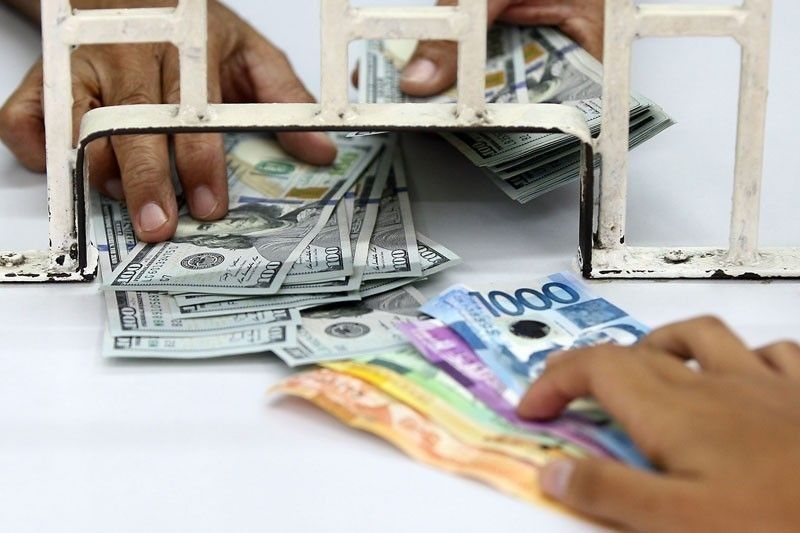Peso sheds 27.5 centavos to 56.42:$1

MANILA, Philippines — The peso depreciated by 27.5 centavos to close at 56.42 to $1 yesterday from Wednesday’s 56.145 to $1, according to the Bankers Association of the Philippines.
The local currency opened weaker at an intraday high of 56.25 before hitting an intraday-low of 56.45. Trading volume jumped by 34 percent to $1.09 billion from $810.71 million last Wednesday.
Michael Ricafort, chief economist at Rizal Commercial Banking Corp., said the US dollar continues to strengthen against global currencies, including the peso, after US Federal Reserve chairman Jerome Powel signaled the US central bank would continue to raise interest rates to stamp out inflation.
Ricafort said the peso again touched the all-time low of 56.45 to $1 recorded last July 12 and 14.
He added that the local currency also weakened after the benchmark 10-year US Treasury yield increased to new two-month highs at 3.2 percent.
According to Ricafort, an offsetting factor for the peso is the continued decline of global crude oil prices to near-seven-month lows at $88 per barrel from $97 per barrel earlier this week.
The bank economist said the decline in oil prices has already erased the increase since the Russia-Ukraine war started last Feb. 24.
For his part, Bank of the Philippine Islands lead economist Jun Neri said there is more demand for dollars amid the 13.9 percent increase in imports of capital goods in the first five months of the year.
This is due mainly to telcos continuing to ramp up capacity and lifting of restrictions on aircraft, ships and boats, and land transportation.
“We’re all competing with all sorts of importers, including the airline companies,” Neri said, adding leases of airplanes have resumed as the economy is already reopening, which would need millions of dollars of spending every year to pay for such leases.
This increase competes with the dollar supply available to the economy, according to Neri.
“Unfortunately, the Philippines transacts with the rest of the world using our own currencies.
“We have more demand for dollars nowadays,” Neri added.
Export growth is only six percent, but total import is up 31 percent at $56.7 billion in the first five months of 2022 compared to $43.9 billion in the same period last year.
Neri said importation has reached $12 billion a month, which when annualized amounts to $144 billion.
Compare that with our gross international reserves at only $100 billion,” Neri added, saying that the direction of the currency during the last five to 10 weeks was based on strong fundamentals.
Neri warned that closing the door for more aggressive rate hikes could deplete the country’s foreign exchange buffer.
The BSP Monetary Board has so far raised interest rates by 175 basis points, bringing the benchmark rate to 3.75 percent from an all-time low of two percent, to curb rising inflationary expectations.
“BSP has to adjust faster toward 4.25 percent by the end of the year if it has to keep with the US,” Neri said.
The very low interest rates here is causing a flight of funds elsewhere, explained Neri, adding that “many investors who are looking for places to earn money will continue to shift their pesos out and put it in dollars. So if that’s the case, the peso will continue to weaken.”
- Latest
- Trending






























